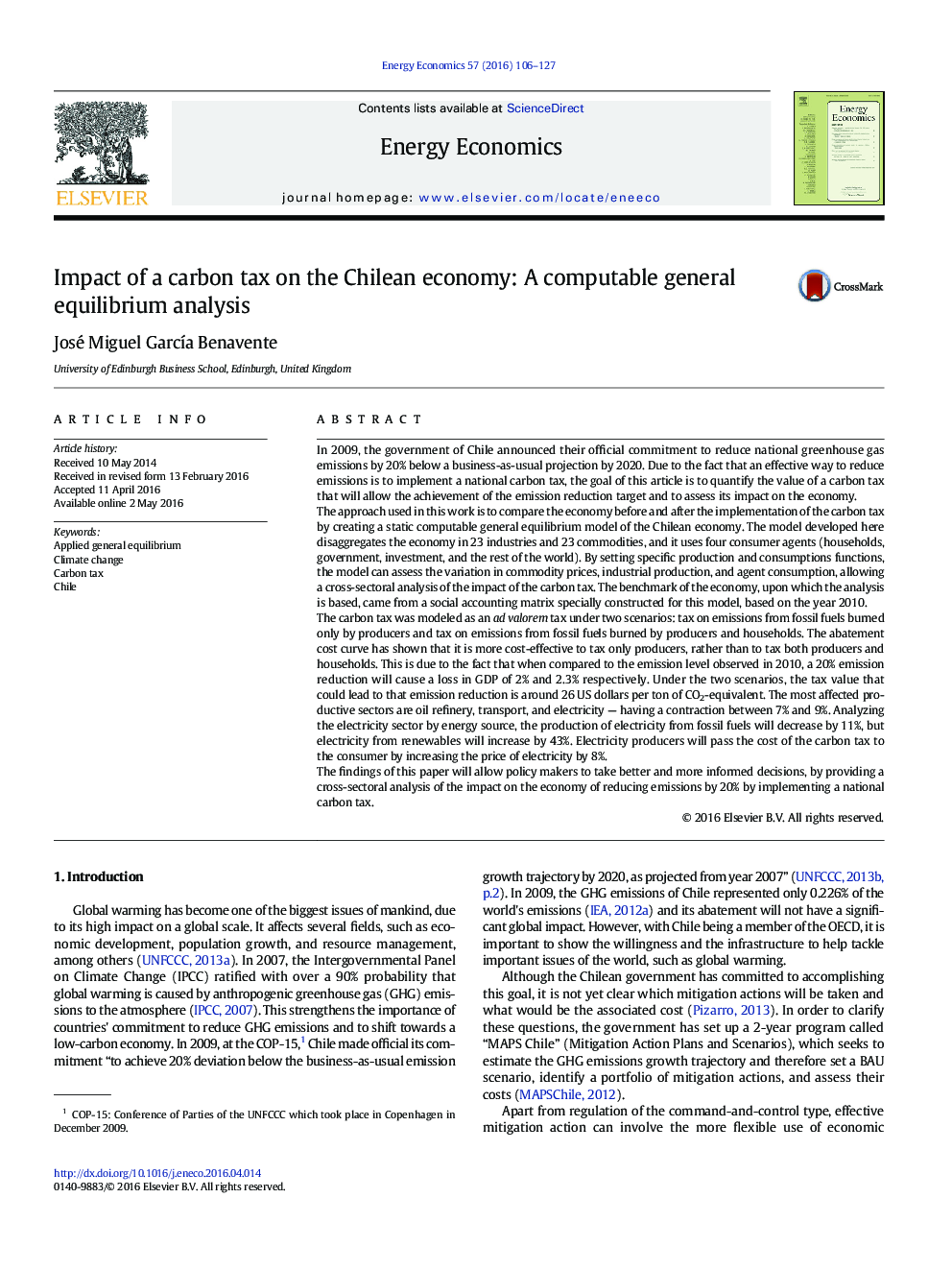| کد مقاله | کد نشریه | سال انتشار | مقاله انگلیسی | نسخه تمام متن |
|---|---|---|---|---|
| 5064124 | 1476707 | 2016 | 22 صفحه PDF | دانلود رایگان |
- A static CGE for the Chilean economy based on an energy-related social accounting matrix is proposed.
- A carbon tax of 26Â USD/tCO2e reduces 20% of emission observed in 2010.
- It will cost the economy a reduction of 2% GDP.
- Generation industry based on fossil fuels reduced by 11% but renewables industry increased by 43%.
- Electricity price for consumers increased by 8%.
In 2009, the government of Chile announced their official commitment to reduce national greenhouse gas emissions by 20% below a business-as-usual projection by 2020. Due to the fact that an effective way to reduce emissions is to implement a national carbon tax, the goal of this article is to quantify the value of a carbon tax that will allow the achievement of the emission reduction target and to assess its impact on the economy.The approach used in this work is to compare the economy before and after the implementation of the carbon tax by creating a static computable general equilibrium model of the Chilean economy. The model developed here disaggregates the economy in 23 industries and 23 commodities, and it uses four consumer agents (households, government, investment, and the rest of the world). By setting specific production and consumptions functions, the model can assess the variation in commodity prices, industrial production, and agent consumption, allowing a cross-sectoral analysis of the impact of the carbon tax. The benchmark of the economy, upon which the analysis is based, came from a social accounting matrix specially constructed for this model, based on the year 2010.The carbon tax was modeled as an ad valorem tax under two scenarios: tax on emissions from fossil fuels burned only by producers and tax on emissions from fossil fuels burned by producers and households. The abatement cost curve has shown that it is more cost-effective to tax only producers, rather than to tax both producers and households. This is due to the fact that when compared to the emission level observed in 2010, a 20% emission reduction will cause a loss in GDP of 2% and 2.3% respectively. Under the two scenarios, the tax value that could lead to that emission reduction is around 26 US dollars per ton of CO2-equivalent. The most affected productive sectors are oil refinery, transport, and electricity - having a contraction between 7% and 9%. Analyzing the electricity sector by energy source, the production of electricity from fossil fuels will decrease by 11%, but electricity from renewables will increase by 43%. Electricity producers will pass the cost of the carbon tax to the consumer by increasing the price of electricity by 8%.The findings of this paper will allow policy makers to take better and more informed decisions, by providing a cross-sectoral analysis of the impact on the economy of reducing emissions by 20% by implementing a national carbon tax.
Journal: Energy Economics - Volume 57, June 2016, Pages 106-127
